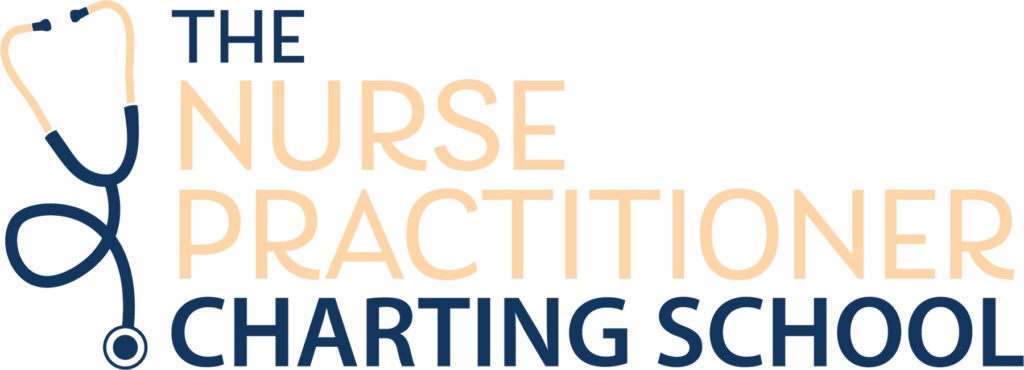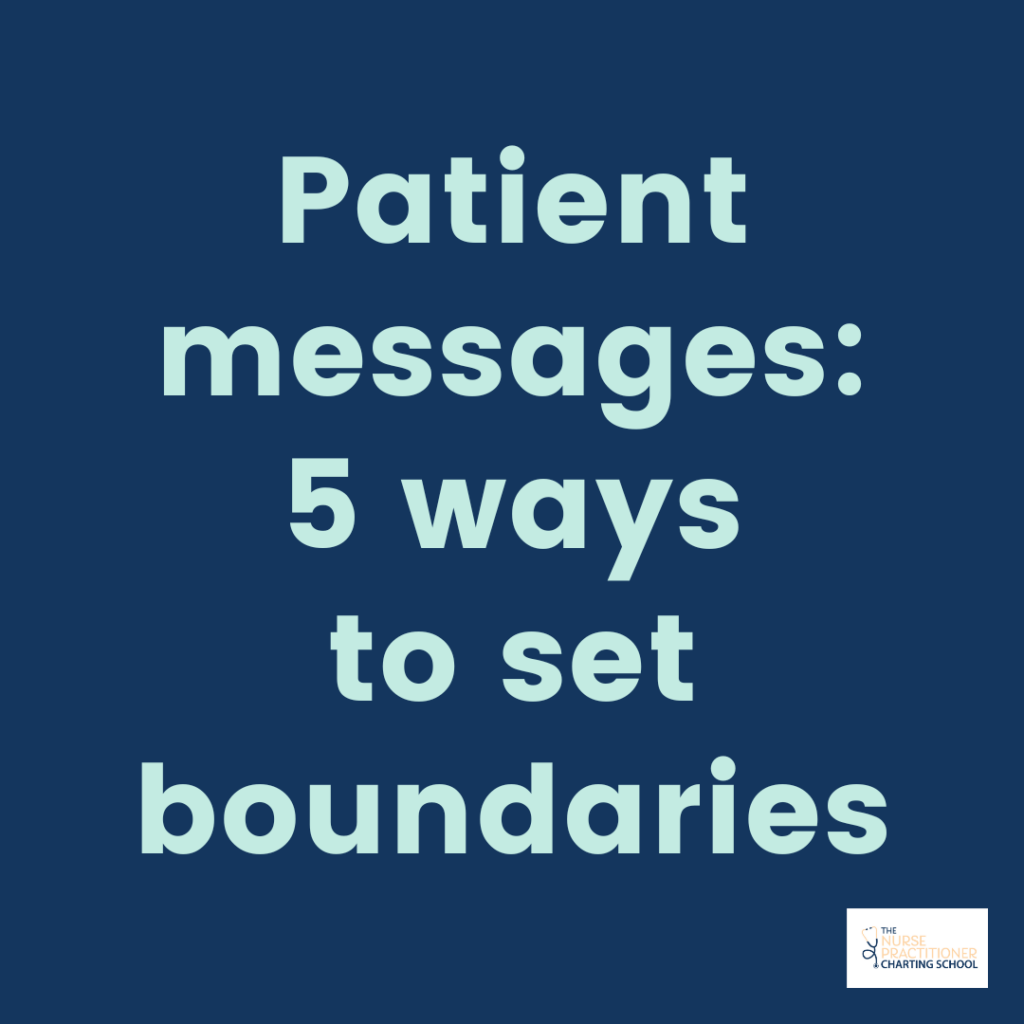Addressing patient messages in the EMR inbox is a major time suck for nurse practitioners. There is a push for nurse practitioners to see more patients in a shorter amount of time. These patient appointments are often at 15 minute intervals and even double booked.
Then add on the medication refills, analyzing diagnostic data, reviewing past medical records, and the never ending patient messages in the EMR inbox.
Keeping up with patient messages in the EMR inbox is challenging for nurse practitioners. This is one reason nurse practitioners struggle to keep up with charting during the day. Many nurse practitioners end up staying late at the office or bringing their charts home.
What are patient messages in the EMR inbox?
Most electronic medical records (EMR) have a patient messaging function. Patients can log in via their patient portal through the EMR. Most systems allow patients to review recent lab results or diagnostic imaging tests.
The patient can also send and receive messages through the patient portal. The message gets sent to the nurse practitioner for review and the provider can send a message back. It seems easy enough and patient messages in the EMR inbox can be a helpful tool.
However, this patient message function can definitely be used and abused. For example, some of the requests through these patient messages are absurd! Asking for a routine refill on their medication even though they have not been seen in over a year. Asking for an antibiotic, without having a clinic visit to further evaluate their conditions. Asking medical advice about a recent change in their health through a lengthy message.
The nurse practitioner can spend a lot of time (on top of an already busy day) addressing the patient messages in the EMR inbox. That is why I recommended nurse practitioners set strong boundaries with the patient messages.
Benefits of setting boundaries
Protect time for nurse practitioners
Setting boundaries with patient messages in the EMR inbox helps to protect your time as a nurse practitioner. When you do not have to address multiple, lengthy patient messages, it freezes up your time to sign those chart notes.
Which means you don’t have to stay late at the office or bring your charts home and disrupt your work life balance.
Enhanced patient responsibility
But setting boundaries with the patient messages also helps the patient. If patients have not been seen in over a year and need a routine med filled, they should schedule an appointment, and this allows the patient to have the time to ask you further questions and gives you the time to look at the overall health and well-being of the patient.
If a patient has an acute issue, they need to be properly evaluated and treated in the clinic. This allows you to get the full history of present illness, complete diagnostic tests, and properly treat that patient.
Setting boundaries with patient messages in the EMR inbox is super important!
Setting boundaries with patient messages
Here are some tips to setting boundaries with patient messages in the EMR inbox.
Establish clear communication policies.
Nurse practitioners and clinic staff should outline guidelines for patient messaging in the EMR inbox. This includes specifying acceptable reasons for contacting the provider, response times, and instances where alternative forms of communication (e.g., phone calls or office visits) are necessary. These lines of communication should be discussed with new patients, but also established patients on a regular basis.
Front office staff can notify people that patient messages in the EMR inbox are to only be used for minor concerns or questions. Nurses and medical assistants can explain to patients the pros and cons of using patient messages in the EMR inbox. And nurse practitioners can make sure their patients understand how to best communicate with them.
Educate on purpose of patient messages
Empower patients by educating them on the appropriate use of patient messages in the EMR inbox. Notify patients that the patient messages in the EMR inbox should only be used for minor questions such as a weekly report of continuous blood glucose monitoring. Or a question about when the patient’s last Tdap was administered. Or a follow-up of a patient’s home blood pressure readings.
Patients should understand that urgent medical concerns or complex issues will require a clinic visit. While patient messages in the EMR inbox are HIPAA compliant, warning patients about confidentiality measures and the types of inquiries suitable for electronic communication is important.
Provide clear response time expectations
Communicate realistic response times to patients, setting expectations for when they can anticipate a reply. Notify patients that the patient messages in the EMR inbox are not meant for urgent or emergent issues. The patient should not mention an acute health issue or ask a question that they need right away. These inquiries need to be addressed during a clinic visit.
How many times has a patient told you about an acute issue through the patient messages function. If the nurse practitioner does not see the message for several hours or even days, it can become a liability issue. That is why explaining to patients response times of patient messages in the EMR inbox is so important.
Utilize automated or scripted responses
Implement automated responses to acknowledge receipt of messages and provide estimated response times. This proactive approach reassures patients while managing their expectations regarding communication timelines. If the EMR does not have this capability, have the support staff utilize a scripted response. This can set a boundary with the patient and easily notify them to schedule an appointment for further evaluation and treatment.
Here is an example of a smart phrase that can be used in patient messages:
“Your concern is best answered directly with your provider at a visit. Please call the office or type “Schedule Request” into the chat box to schedule an appointment. We look forward to seeing you at the office or through a virtual visit. “
***For more access to 125 smart/dot phrases you can easily use in your charting system, check out the Comprehensive List of Smart Phrases!
Delegate addressing patient messages
Delegate non-clinical tasks, such as patient message screening and administrative inquiries, to support staff when appropriate. Nurses and medical assistants can address many of the inquiries from the patient messages in the EMR inbox.
The support staff can also set that boundary with the patient and notify them they need to schedule an appointment for further evaluation and treatment. Any patient messages in the EMR inbox that cannot be addressed by support staff can then be sent to the nurse practitioner for review.
Notifying patients ahead of time that the patient messages may be reviewed by another health professional before sent to the nurse practitioner is also important! Delegating responsibilities optimizes workflow efficiency and allows nurse practitioners to focus on getting their charts signed so they can STOP charting at home.
More help on setting boundaries
Setting boundaries with patient messages in the EMR inbox is super important!
While patient messages can be a very useful tool for communication between a patient and health care provider, it can also become detrimental. Nurse practitioners need to set boundaries with patient messages in the EMR inbox so they can better protect their time.
Which is why I put together a training just for primary care nurse practitioners!
This training will teach you the top charting and time management tips for primary care!
No more feeling overwhelmed with the amount of work to be done as a nurse practitioner.
No more constantly running behind and charting at home.
No more questioning if you should leave healthcare altogether.
In order to access this training, you can join the STOP Charting at Home Membership!

Erica D the NP is a family nurse practitioner and The Nurse Practitioner Charting Coach. Erica helps nurse practitioners STOP charting at home! Erica created The Nurse Practitioner Charting School to be the one stop for all documentation resources created specifically for nurse practitioners. Learn more at www.npchartingschool.com
Follow on Facebook: The Nurse Practitioner Charting SchoolAnd on Instagram: @npchartingschool
Free training: 4 charting tips to help nurse practitioners get their time back! Sign up here!



